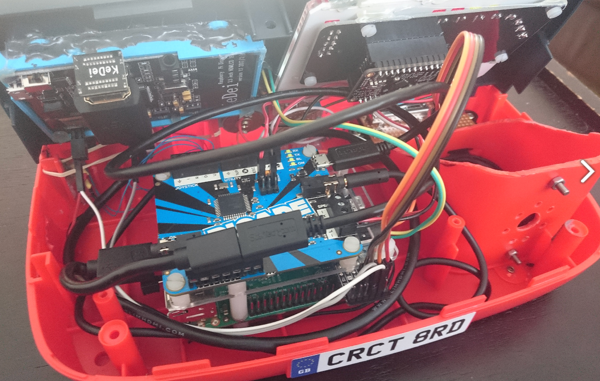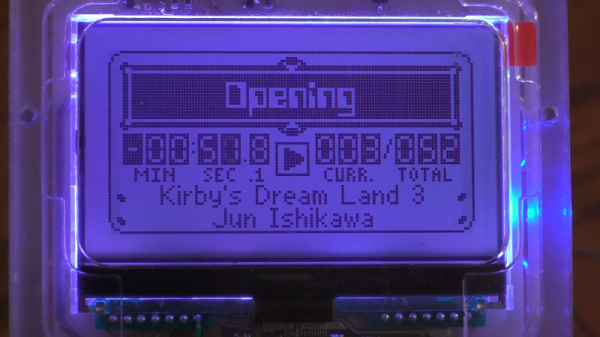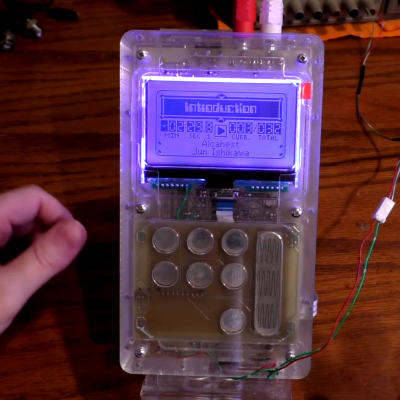We see a lot of MAME cabinets and other gaming emulator projects here on Hackaday, but it’s not often that we see one the form factor of which so elegantly matches the ROM. [circuitbeard] converted a Tomy Turnin Turbo toy dashboard into a mini arcade machine playing Outrun.
There are many fascinating details in [circuitbeard]’s writeup. His philsophy is to “keep it looking stock” so he went to great lengths to add functionality to various elements of the toy without changing its appearance. The gear shifter was turned into a 3-way momentary switch with high and low speeds at top and bottom, with rubber bands pulling the switch back the center (neutral) when he lets go of it. The original toy’s steering wheel mounts to a slide potentiometer. The dash has a working ignition switch that uses a PowerBlock to manage the safe startup and shutdown of the Pi. The dash also lights up the way you’d expect, and even displays accurate MPG and rev info.
For more MAME goodness here on Hackaday, see this broken tablet turned into a mini MAME cabinet or the portable MAME system of the future
























